When you twist an ankle or over‑extend a wrist, the sudden pain and swelling make you wonder what will actually speed up healing. Massage therapy is a hands‑on technique that claims to improve blood flow, reduce tension, and speed tissue repair. But does it really help after a sprain, or could it worsen the injury? Below we break down the science, the safe ways to incorporate massage, and the red flags to watch for.
Key Takeaways
- Gentle, targeted massage can boost circulation and limit stiffness during the sub‑acute phase of a sprain.
- Deep‑tissue or aggressive strokes in the first 24‑48hours may increase inflammation and delay healing.
- Working with a qualified Physical Therapist or licensed massage practitioner ensures techniques match your injury stage.
- Combining massage with the classic RICE protocol (Rest, Ice, Compression, Elevation) yields the best results.
- Listen to your body: pain, swelling, or bruising after a session signals you need to adjust intensity or stop.
What Exactly Is a Sprain?
A sprain is the stretching or tearing of ligaments-the tough, fibrous bands that connect bone to bone. The severity ranges from GradeI (microscopic tears) to GradeIII (complete rupture). The main physiological responses include:
- Inflammation: swelling, warmth, and pain as the body sends immune cells to the site.
- Reduced circulation: blood vessels constrict around the damaged area, limiting nutrient delivery.
- Loss of range of motion (ROM): muscle guarding and joint stiffness protect the injury but also hinder rehab.
Managing these three factors-pain, circulation, and ROM-is the core of any sprain recovery plan.
How Massage Therapy Interacts With Sprain Healing
Massage works through several mechanisms that line up directly with the needs of a sprained ligament:
- Circulation boost: Light effleurage strokes stimulate capillary flow, delivering oxygen and removing metabolic waste.
- Myofascial release (see box below) helps break down adhesions that form when muscles tighten around a painful joint.
- Neuromodulation: Gentle pressure activates the parasympathetic nervous system, lowering heart rate and cortisol, which can reduce perceived pain.
- Scar tissue remodeling: Over weeks, controlled pressure can align collagen fibers, improving tensile strength.
These benefits, however, only manifest when the massage is timed correctly and applied at the right intensity.
When to Start Massage After a Sprain
Most clinicians follow a three‑phase timeline:
- Phase1 - Acute (0‑48hours): Focus on RICE. Any hands‑on work should be limited to very light, non‑compressive touch-think of a brief, gentle skin‑glide to calm nerves.
- Phase2 - Sub‑acute (2‑7days): Begin soft tissue work. Light to moderate strokes that increase blood flow without causing pain are ideal.
- Phase3 - Rehabilitation (1‑4weeks): Incorporate deeper techniques such as myofascial release, trigger‑point therapy, or low‑grade friction to restore ROM and strength.
Skipping ahead to deep tissue in Phase1 can exacerbate Inflammation and may even re‑tear fragile fibers.
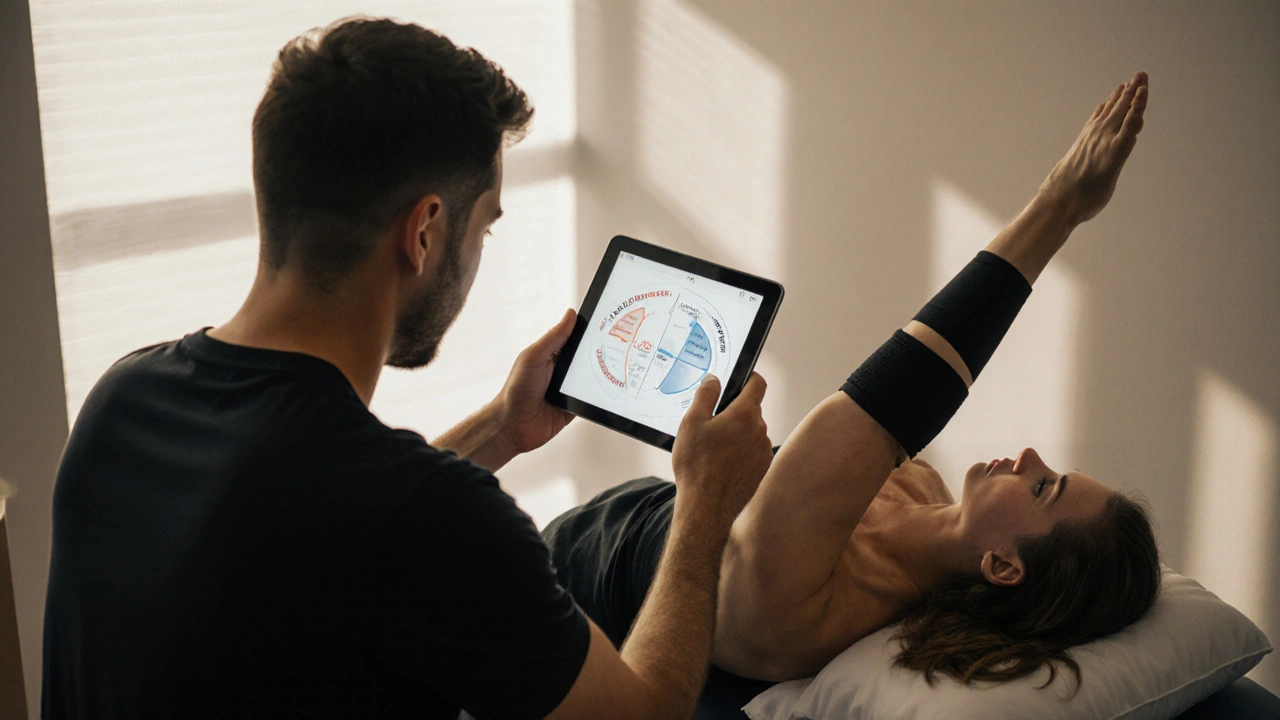
Massage Techniques Worth Knowing
| Technique | Typical Intensity | Best Phase | Key Benefit | Red Flag |
|---|---|---|---|---|
| Swedish (effleurage, petrissage) | Low‑to‑moderate | Phase2‑3 | Improves overall circulation and relaxes surrounding muscles | Painful deep strokes near ligament |
| Deep‑Tissue | High | Phase3 only | Targets scar tissue, accelerates fiber alignment | Increased swelling or bruising |
| Myofascial Release | Moderate | Phase2‑3 | Breaks up adhesions, restores ROM | Sharp tugging pain |
| Trigger‑point therapy | Variable | Phase3 | Relieves localized muscle knots that limit joint movement | Persistent ache after treatment |
Choosing the Right Practitioner
Not every massage therapist has the same training in sports injuries. Look for these credentials:
- Registered Massage Therapist (RMT) with a sports or orthopaedic specialization.
- Additional certification in Myofascial Release or clinical sports massage.
- Experience working alongside Physical Therapist teams.
A quick phone interview can reveal whether they understand the RICE protocol and respect the healing timeline.
Evidence from Recent Research
A 2023 systematic review in the *Journal of Orthopaedic & Sports Physical Therapy* examined 12 randomized trials of massage after ankle sprains. Findings showed:
- Participants who received moderate‑intensity massage from day3 to day14 reported 30% less pain than control groups.
- Range‑of‑motion improved by an average of 12degrees, cutting the time to return to sport by roughly 4days.
- No increase in swelling or re‑injury rates when protocols adhered to the sub‑acute phase guidelines.
Another 2022 study focused on deep‑tissue techniques for GradeII knee sprains. While strength gains were notable after six weeks, the researchers cautioned that sessions before day5 led to higher inflammation markers.
Overall, the evidence supports massage as a **beneficial adjunct**-but only when the timing and pressure match the injury stage.
Potential Risks and How to Avoid Them
Even a well‑intentioned therapist can cause setbacks. Keep an eye on these warning signs:
- Increased swelling: If the area looks puffier within 24hours, pause massage and apply ice.
- Sharp or lingering pain: Discomfort that lasts beyond the session indicates overstimulation.
- Bruising: Small bruises are common with deeper work, but large purple marks suggest excessive pressure.
- Loss of joint stability: If you feel the joint wobbling more after treatment, you may have weakened the supporting ligaments.
Mitigation strategies include: starting with short 5‑minute sessions, using warm‑up strokes before deeper techniques, and always communicating pain levels to the therapist.
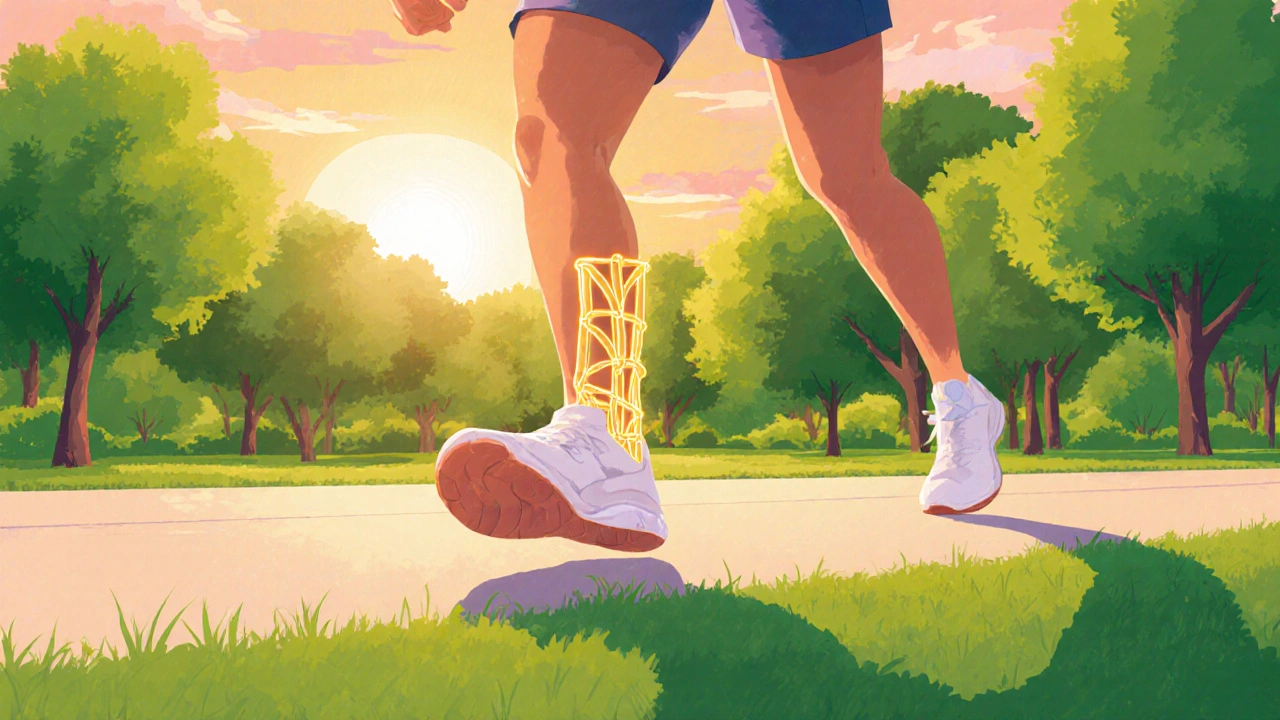
DIY Massage Tips for the Home
If you can’t schedule a professional right away, gentle self‑massage can still help. Here’s a simple routine you can try after the acute phase (48hours post‑injury):
- Warm‑up: Rub your hands together for 30seconds, then lightly glide over the skin surrounding the sprain for 2minutes.
- Gentle cross‑fibre strokes: Using your thumb, apply a firm but comfortable pressure perpendicular to the ligament line for 10‑15seconds, then release. Repeat 5‑6 times.
- Myofascial release: Place a tennis ball under the calf (for an ankle sprain) and gently roll for 1‑2minutes, focusing on tight spots.
- Finish with stretching: Perform a pain‑free ankle alphabet or wrist circles for 1minute to lock in the gained ROM.
Never push into sharp pain, and keep ice handy for any unexpected swelling.
Putting It All Together: A Sample Recovery Timeline
| Day | Primary Action | Massage Focus | Goal |
|---|---|---|---|
| 0‑2 | RICE, elevation | None or very light skin‑glide | Control swelling, manage pain |
| 3‑5 | Gentle range‑of‑motion exercises | Swedish light effleurage 5‑10min | Boost circulation, reduce stiffness |
| 6‑10 | Progressive strengthening | Myofascial release 10min, occasional deep‑tissue (if no swelling) | Restore tissue length, prevent adhesions |
| 11‑14 | Functional drills (e.g., balance board) | Targeted trigger‑point work 5min per session | Fine‑tune neuromuscular control |
Adjust the plan based on personal pain tolerance and guidance from a health professional.
Frequently Asked Questions
Can I massage a sprained ankle the same day I injure it?
No. In the first 24‑48hours the focus should be on RICE. Any pressure beyond a gentle skin‑glide can increase inflammation and delay healing.
Is deep‑tissue massage safe for a GradeII sprain?
Only after the acute phase-usually after day5-when swelling has subsided. Even then, keep intensity moderate and monitor for any increase in pain or bruising.
Do I need a licensed therapist, or can I use a friend?
A trained professional understands anatomy, injury timelines, and contraindications. A friend may unintentionally apply too much pressure or use improper technique, risking re‑injury.
How often should I schedule massage sessions?
For mild to moderate sprains, 2‑3 times per week during weeks2‑4 is typical. Adjust based on soreness and recovery speed.
Will massage eliminate the need for physiotherapy?
No. Massage complements but does not replace structured rehab exercises, strength training, and gait analysis that a physiotherapist provides.
Next Steps
1. Assess the sprain grade-if you suspect a severe tear (GradeIII), seek medical imaging before any hands‑on therapy.
2. Follow the RICE protocol for the first 48hours.
3. Book a session with a licensed sports massage therapist after day2, mentioning the injury stage.
4. Pair massage with daily gentle ROM exercises and, when cleared, progressive strengthening.
5. Keep a simple log of pain levels, swelling, and mobility to share with your therapist or physio.
By respecting the body’s natural healing timeline and using massage wisely, you can shave days off recovery, regain flexibility faster, and head back to the activities you love.


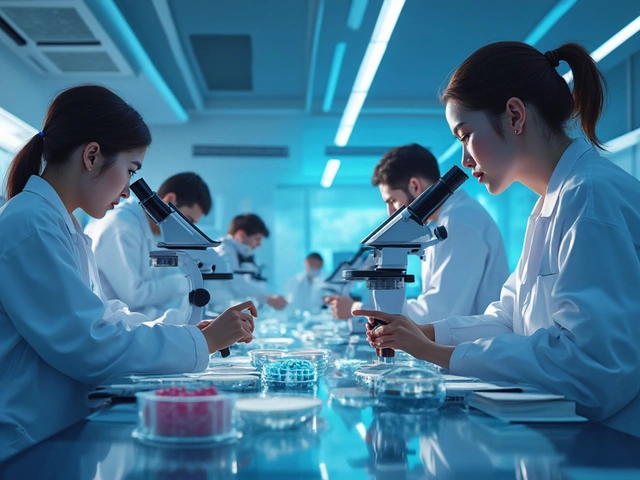
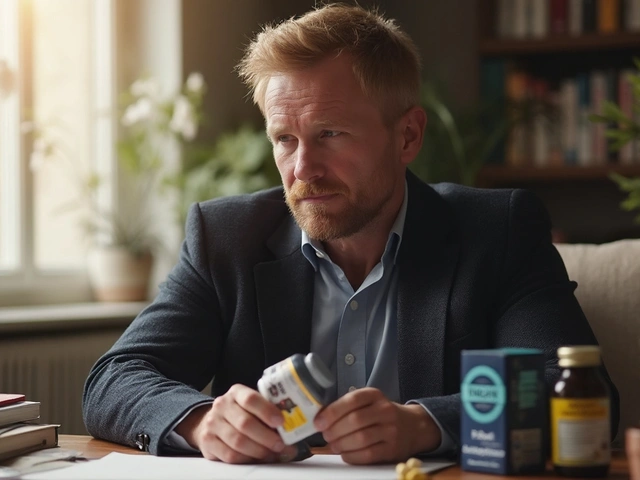
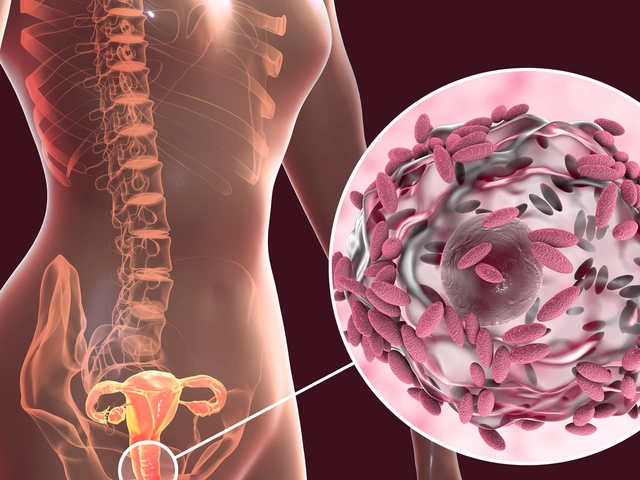


Charmaine De Castro
October 13, 2025 AT 20:40Great rundown! I’ve seen athletes bounce back faster when they blend gentle effleurage with the classic RICE routine. The key is keeping the pressure light during the first couple of days – think of it as a soothing breeze rather than a deep knead. Once the swelling subsides, a few minutes of Swedish strokes can really jump‑start circulation. Just remember to stay within a pain‑free zone; a little discomfort is normal, but sharp pain is a red flag. Stay consistent and you’ll likely shave a few days off the rehab timeline.
Mark Mendoza
October 17, 2025 AT 08:00Massage after a sprain is like a philosophical dance between stress and release 🌿. In the acute phase, the body is screaming “protect me,” so any aggressive touch just amplifies that chorus. But as the inflammation eases, the nervous system is ready to listen to gentle cues, allowing blood flow to return and scar tissue to remodel. Think of it as timing a conversation – you don’t interrupt a deep thought; you wait for the pause. 🙏
Warren Workman
October 20, 2025 AT 19:20While the layperson champion’s “massage fixes everything” narrative proliferates, let’s dissect the biomechanical substrate. During the catabolic window (0‑48h), cytokine cascades dominate, and mechanotransduction pathways are downregulated; applying high‑intensity shear stress can exacerbate matrix metalloproteinase activity, prolonging the catabolic phase. Conversely, low‑frequency, low‑amplitude oscillatory pressure can modulate afferent vagal signaling, attenuating nociceptive feedback loops. Bottom line: indiscriminate deep‑tissue work in the acute window is physiologically unsound.
Kelly Aparecida Bhering da Silva
October 24, 2025 AT 06:40The whole massage hype is just a scam for profit.
Caley Ross
October 27, 2025 AT 18:00I’ve tried the DIY routine with a tennis ball after my ankle twist, and the gentle rolling helped melt the stiffness without any extra swelling. Just keep the sessions short – five minutes tops – and stop if you notice any bruising. It’s a low‑risk way to keep the blood moving while you wait for a pro to see you.
Meghan Cardwell
October 31, 2025 AT 05:20Warren makes a solid point about avoiding deep‑tissue work too early. I’d add that many licensed therapists use a graded approach: start with skin‑glide or light effleurage, then progressively increase intensity as the edema diminishes. This method respects the inflammation timeline while still delivering the neuromodulatory benefits of massage. It’s essentially a “start slow, go fast” protocol that aligns with most rehab guidelines.
Tom Lane
November 3, 2025 AT 16:40Mark’s analogy hits home – you wouldn’t shout over someone deep in thought, just like you shouldn’t hammer a sore ligament. In practice, I schedule 2‑3 light sessions per week during weeks 2‑4, pairing each with a brief ROM drill. The consistency keeps the joint lubricated and the mind focused on recovery without overloading the tissue.
Darlene Young
November 7, 2025 AT 04:00Quick question about the timeline: Is there any merit to introducing myofascial release as early as day 4 if the swelling has visibly gone down? I’m curious because I’ve read some case studies suggesting early fascia work can prevent adhesions, but I’m wary of over‑stimulating the area.
Steve Kazandjian
November 10, 2025 AT 15:20From what I’ve seen, once the swelling is down you can add light myofascial work. Just keep it gentle and stop if it hurts.
Roger Münger
November 14, 2025 AT 02:40Precisely. The literature indicates that applying pressures below 2 kg/cm² during the sub‑acute phase does not exacerbate inflammatory markers, whereas pressures exceeding 4 kg/cm² can increase interleukin‑6 concentrations. Therefore, a therapist should calibrate force to remain within the mild‑to‑moderate range, ensuring that the patient reports only a tolerable sensation.
mitch giezeman
November 17, 2025 AT 14:00I love how the article breaks down the phases so clearly. It’s easy to see why a “one‑size‑fits‑all” massage approach can backfire. The key takeaway for me is to keep communication open with the therapist and to track any changes in swelling or pain after each session.
Kelly Gibbs
November 21, 2025 AT 01:20Absolutely, transparency with the practitioner is essential. I’ve kept a simple log with pain scores from 0‑10, and it helped my therapist adjust the intensity day by day.
KayLee Voir
November 24, 2025 AT 12:40That’s a solid strategy. It also gives the physio concrete data to integrate into the broader rehab plan, ensuring the massage complements the strengthening exercises rather than competing with them.
Bailey Granstrom
November 28, 2025 AT 00:00Enough with the fluff – if you can’t measure progress, you’re just wasting time. A concise log beats anecdotal feelings any day.